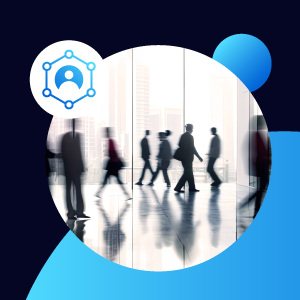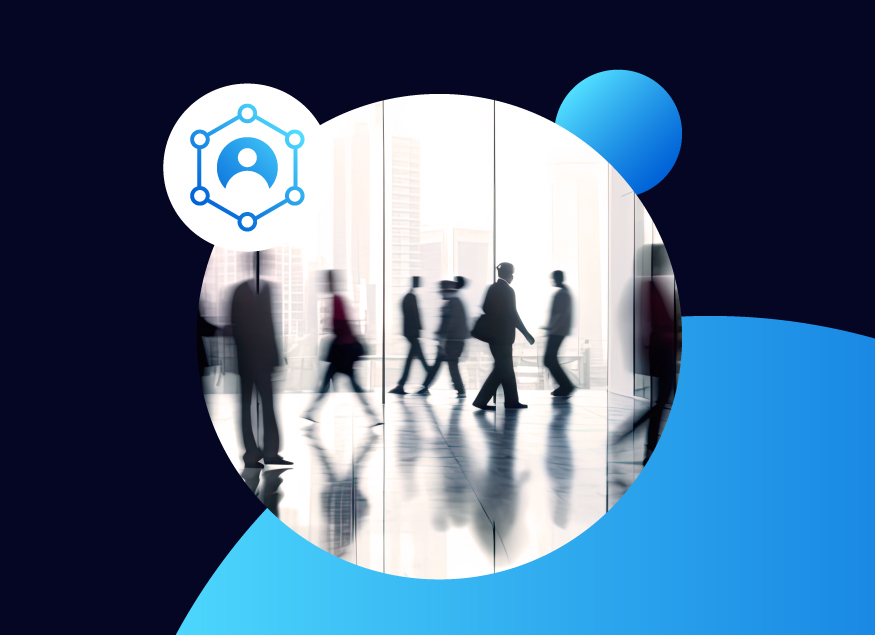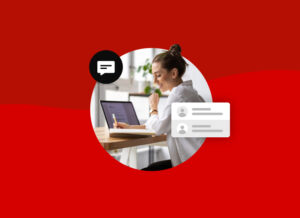At the 2025 Customer Experience (CX) and Engagement Summit, thought-leaders and Government officials from the U.S. Department of Health and Human Services (HHS), the U.S. Air Force, GovExec and more discussed the many ways Government agencies can use company culture and technology to build trust and reach customers.
Carahsoft and our partners are committed to helping agencies find the right technology for their CX solutions.
People, not Products
Customers have come to expect seamless, digital-first experiences in service delivery. In the session “Creating a Customer-First Culture,” Dwight Chamberlain, the Area Vice President at Docusign, and Marcy Katz Jacobs, the Chief Digital Experience Officer for the State of Maryland, attest that Government can close current service gaps by reframing business models to prioritize people, not products. Traditionally, Government modernization efforts have prioritized systems and software over service design. By addressing communication barriers instead, teams can identify service gaps and engage more effectively with customers.
Fragmentation is another barrier to exemplary service. “It’s our job to connect the dots behind the scenes,” Jacobs states. “Showing teams that their silo is part of a bigger picture helps them align around a common mission.” Maryland’s new analytics platform, Analytics.Maryland.Gov, is one tool Jacobs’ team is using to better understand public demand and find a unified goal. It tracks critical data, such as where people are going on state websites, how long they are staying and where they drop off, which helps determine which services to focus improvement efforts on. “We have so many ways to listen — emails, phone calls, escalations, bad form data — but we haven’t been using that feedback to inform what we fix next,” Jacobs shares. “Now we are.” The combination of user data, internal feedback and data analysis enable Maryland to go beyond digitizing Government, humanizing services to be more intuitive, transparent and trusted.
Driving Transformation through Service Delivery
While new technology is vital to achieving maximized efficiency, technology alone cannot drive transformation. In the session “The Employee Experience: A Foundation for CX,” speakers Colt Whitall, the former Chief Experience Officer of the U.S. Air Force and founder of Bravo 17, and Karl Hermann, solutions engineering manager for State, Local and Education (SLED) and Federal Government at Zoom, discussed how meaningful change comes from connecting internal experience with mission outcomes. Hermann attests that technology should work for its users, not the other way around. In the rush to modernize, the day-to-day reality of user experience can be easily overlooked. Hermann watches employees juggle several different tools for business operations. By consolidating these tools into one platform, he found that agencies can reduce confusion, boost productivity and make services more accessible.

Whitall explained that when internal tools fail, service delivery comes to a halt as well. Whitall encouraged his team to shift their mindset to treat technology issues like product issues. They created a ‘Voice of the Customer’ program that monitors digital experience and collects data on performance and user perception. “That way, we can start to ascertain where service levels are impacting the mission and where they’re impacting productivity,” Whitall explains. By mapping technical pain points to real-world productivity loss, agencies can make the business case for faster technology replacements, better support and smarter investments.
Improving Workflows with Cross-Agency Communication
In the session “Overcoming Organizational Silos,” speakers Alana M. Burman, the Director of Policy, Intergovernmental Affairs & Mediation at the Pennsylvania Human Relations Commission, and Jamison Bruan, the Vice President of the Global Public Sector at Salesforce, discussed overcoming silos to service delivery. Today’s infrastructure creates silos that lead to communication and service gaps. “Communication should have no hierarchy. Everyone in the organization needs information at the speed of relevance,” Braun says. Shifting policy to support cross-departmental communication is the key to encouraging staff to take a more collaborative role, ultimately improving agency efficiency. Technology can also aid in unifying Government agencies by enabling the quick and efficient sharing of information across departments. Juggling multiple systems can lead to confusion and slower workflows, while one technology platform with omnichannel capabilities allows employees to effectively communicate, collaborate and document. Burman concludes that such systems are “revolutionary to the way that Government works and the way we think about how our public interacts with Government.”
The Top 6 Leadership Qualities for Success
At the session “Harnessing Your Inner Leader: Empowering a CX Culture,” speakers Avery Muse, the Sr. Founder and CEO of the Muse Group, as well as the Former Executive Director of the Office of IT Operations at the HHS, Amanda Chavez, the Vice President of CX at Qualtrics, and Anna Pettyjohn, the EVP of Product and Strategy at GovExec, discussed the best leadership qualities.
Here are their top 6:
- Leadership begins with initiative, not a title.
Leadership is not limited to executives or managers. Rather, a leader is one that acts to drive change when they see a need.
- Curiosity and authenticity
Curiosity shapes the way leaders build relationships, solve problems and bring others into CX work. Rather than emulating others, leaders should build on their own authentic, unique strengths.
- Small ideas scale faster with the right community
Change begins by working with passionate, knowledgeable people who can uplift teams. For some communities, agencies will need to use non-traditional methods to gather feedback, to ensure they are meeting the holistic needs of their customer base.
- Measure the experience, not just the output
Meaningful metrics, such as employee productivity and complete resolution of support issues, help measure how well a service works.
- The language of CX is evolving
As the Government invests in new CX initiatives, leaders must also rethink the terminology itself. Customers expand beyond the public, including employees and internal stakeholders. With a clear definition, agencies can target solutions towards an inclusive customer base.
- The future is ‘total experience’
When agencies lose time on outdated systems, they lose opportunities to connect with and serve the public. Muse recommends agencies rebuild for what he calls a “total experience,” a strategy that aims to connect Government services, employee strategy and customer desires. With the combination of relevant technology and a strategy-based, unified plan, agencies can reach their maximum potential.
Ultimately, by unifying technology, CX-focused leadership and service delivery, agencies can enhance their services while fostering trust and inclusion with the customers they serve.
To learn more about the topics discussed at the 2025 CX & Engagement Summit, view the session recordings, on-demand. To learn more about the technologies that can help meet your agency’s mission statement, take our Carahsoft’s CX Buyer’s Guide Quiz, or visit our CX and engagement solutions portfolio.








